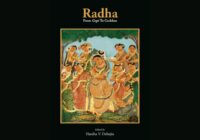Hinduism is the third-largest religion in the world, and probably the most misunderstood. Despite widespread misconceptions, however, it has had a surprisingly large influence in America ever since Ralph Waldo Emerson and other seminal thinkers became enamored with the sacred texts that form the religion’s foundation.
Today, more than two million Hindus of Indian origin live and work side by side with their fellow American citizens. Hindu temples, like Jewish synagogues and Muslim mosques before them, have cropped up in cities and suburbs throughout the country. Americans increasingly do business in India. Perhaps most importantly, ever since the 1960s, millions of non-Indian Americans have become deeply engaged in Hindu-related practices such as yoga and meditation, for both spiritual and secular reasons. In this context, what seems like a narrow scholarly debate about a long-dead mystic, in fact, takes on extraordinarily broad significance.
Swami Tyagananda and Pravrajika Vrajaprana’s 2010 book, Interpreting Ramakrishna: Kali’s Child Revisited, is a painstaking attempt to refute the central thesis of American scholar Jeffrey Kripal’s earlier work, Kali’s Child: The Mystical and the Erotic in the Life and Teachings of Ramakrishna. Published in 1995, Kripal’s book roiled political and cultural waters that academic volumes seldom disturb.
Based on Kripal’s doctoral dissertation, Kali’s Child took as its subject the legendary 19th century mystic, Sri Ramakrishna Paramhansa. Ramakrishna was one of the most colorful, enigmatic and revered holy men in India, where such figures are as much a part of the landscape as the ornate temple towers looming above dusty villages or the unassuming shrines tucked into alcoves in teeming cities.
Intrigued by the man so many consider a modern saint, Kripal set about dissecting the sage’s psyche with the scalpel of psychoanalytic theory. He argued that at the secret heart of Ramakrishna’s life and work was homoeroticism and sexual abuse.
Objections to academic texts are typically voiced by the author’s colleagues in journals, books and conferences. But Kripal’s conclusions were different because Ramakrishna is worshipped by devotees in both India and the West. He is regarded as a spiritual exemplar by seekers of all kinds, thanks to the chain of mission centers established in his name by his chief disciple, Swami Vivekananda, and the writings of illustrious Western devotees like Christopher Isherwood.
Hindu controversy and scholarly debate
The reaction of many Hindus to Kripal’s thesis was similar to that of certain Christians to Martin Scorsese’s controversial film, The Last Temptation of Christ, or to those who speculate about what Jesus and Mary Magdalene may have been up to when the apostles weren’t looking. To attribute sexual impulses to a figure many consider a divine avatar — or at least an apostle of self-realization who had transcended base desires — was, to some minds, an insult verging on blasphemy.
Some critics treated Kripal to the same facile psychoanalysis that they accused him of applying to Ramakrishna. Attempts to ban his book went all the way to the Indian Parliament, though they were unsuccessful. He even faced personal threats in the closest thing to a fatwa that one can imagine in the land of Mahatma Gandhi.
Kripal’s critics within the academy were less emotional. They either disagreed with his conclusion on intellectual and methodological grounds or dismissed his assertions as mere speculation. But critics were in the minority. Most scholars of religion greeted Kali’s Child with kudos; the book was honored with prestigious awards, including the American Academy of Religion’s History of Religions Prize for the Best First Book of 1995. Even those who were indifferent to the subject matter rallied around Kripal on the grounds of academic freedom.
For his part, Kripal maintained that he held Ramakrishna in the highest regard and was merely doing what any scholar should: analyzing a phenomenon through a particular theoretical lens and following the inquiry to a well-reasoned conclusion.
To scholars, disagreement and argument are both expected and desirable. But book banning? Personal attacks? Threats of violence? Beyond the pale. In a name-calling standoff, Kripal’s critics were labeled homophobes, Hindu fundamentalists and right-wing Indian nationalists, while his defenders were branded Hinduphobic, sex-obsessed cultural imperialists.
I interviewed both Kripal and the authors of Interpreting Ramakrishna for my own 2010 book, American Veda: From Emerson and the Beatles to Yoga and Meditation: How Indian Spirituality Changed the West. As such, I can confidently state that none of those charges apply to any of the three. Over time, cooler heads prevailed, but the debate never died. Kali’s Child became a symbol of the tension between academic critiques of Asian religions and the practitioners of those religions, who claim that Western interpretations seldom reflect their actual beliefs and practices.
In light of the controversy, Interpreting Ramakrishna, although it is merely one reaction to one scholar’s take on one Hindu luminary, has a far larger resonance. The book is an exhaustive effort to refute Kali’s Child on its own terms by two monastics in the Ramakrishna order: Swami Tyagananda, an India-born monk who runs the Vedanta Society of Boston in Massachusetts and serves as Hindu chaplain at both MIT and Harvard; and Pravrajika Vrajaprana, an American nun at the Vedanta Convent in Santa Barbara, California.
While neither author occupies an academic position or has earned a doctorate, each is deeply immersed in scholarly pursuits. Fifteen years after the appearance of Kripal’s casus belli — the act that provoked, in this case, a war of words — they released their multi-pronged rebuttal.
Tyagananda and Vrajaprana’s critiques of Kali’s Child
One line of attack in Interpreting Ramakrishna is on Kripal’s translations of the recognized source texts on Ramakrishna. The authors regard the Bengali-to-English rendering in Kali’s Child as significantly flawed. For his part, Kripal contends that his mistakes were few (some were corrected online and in a second printing) and do not affect his salient arguments. Tyagananda and Vrajaprana beg to differ, arguing that Kripal, consciously or unconsciously, made linguistic choices that bolstered his predetermined conclusions.
Words and phrases that the respective authors translate differently are many and varied; they are not inconsequential. Perhaps the best example is the Bengali phrase, kāminī-kāñcana. Previous translators have rendered the phrase, “women and gold.”
The authors of Interpreting Ramakrishna say it was often used by Ramakrishna to symbolize lust and greed, or, more generally, the worldly distractions that spiritual aspirants are advised to avoid. Kripal’s translation is “lover-and-gold.” For Tyagananda and Vrajaprana, this is an attempt to reinforce Kripal’s portrait of Ramakrishna as a misogynist who feared sexualized women (as opposed to women as maternal figures). Kripal, in turn, accuses translators who use “women” as merely a symbol for lust of participating in the cover-up of Ramakrishna’s secret homosexuality.
To the lay reader, each side can sound convincing on these issues of textual fidelity. This should not be surprising. Why should Bengali texts be different from Hebrew, Greek, Aramaic, Arabic, Sanskrit or any other source of sacred literature whose meaning is debatable? The larger issue is the ambiguity of translation itself. Try as they may to be objective, translators invariably bring a boatload of cultural and ideological assumptions to their work. That is a matter of no small import in any conversation about religion.
Tyagananda and Vrajaprana also go after Kripal’s reliance on psychoanalytic theory. The question of whether any Western framework is entirely adequate for understanding Hinduism is a matter of considerable debate, but when the theory in question is as provocative as Austrian neurologist Sigmund Freud’s, the atmosphere gets even more contentious. Are psychoanalytic concepts valid and universal enough to be applied by anyone to anything? More specifically, can those concepts be applied to a Hindu renunciate who lived over a century ago in a culture vastly different from Freud’s Europe or today’s America?
As with translation arguments, this is a matter for scholars to adjudicate. Non-experts can readily see the appeal of Freudian ideas, but they can also see why psychoanalytic concepts might produce an incomplete portrait of an individual, or even a radical distortion. At issue, among other things, is the relationship between the erotic and the mystical. That the two might be connected is easy to see; that they are inextricably and causally linked, as Kripal would argue, is a leap that many — including the authors of Interpreting Ramakrishna — are unwilling to take. To them, Freudian interpreters of religion are the proverbial hammer carriers, finding nails wherever they look.
Finally, Tyagananda and Vrajaprana accuse Kripal of making bold assertions that are unsupported by the available evidence. In their view, Kali’s Child is more a product of speculative imagination than of rigorous deduction, the inference being that Kripal’s conclusions owe more to his own psyche and his philosophical biases than to the facts at hand. Needless to say, Kripal’s supporters make the same claim about Ramakrishna’s devotees, many of whose descriptions of the master can accurately, and unsurprisingly, be described as hagiographic — representing a revered person as perfect or ideal.
My two cents
I myself do not approach these disputed issues as either an academic or an expert on the life of Ramakrishna. But I have more than a passing interest in how religions, especially Hinduism, are understood by the general public, so I am glad that Tyagananda and Vrajaprana have presented their argument in painstaking detail and readable prose. I hope that academic scholars, for their part, will critique their work honestly and vigorously and let the chips fall where they may, rather than summarily ignoring the book because the authors are devotees and not fellow academics. That would be a shame, as their voices, like Kripal’s, deserve to be heard.
For a long time, something called “The Insider/Outsider Debate” has raged in the ivory towers of religious studies. To religious practitioners (“insiders”), scholars of religion who rely primarily on textual analysis (“outsiders”) lack the direct experience necessary to comprehend spiritual beliefs and practices. For their part, scholars tend to see insiders as lacking the objectivity necessary to see their own religions without nearsighted distortion.
Each side makes a strong case, but each is weighted down with preconceived notions. This begs the question: Is there such a thing as objectivity in matters of religion? As Tyagananda and Vrajaprana themselves acknowledge, “objectivity cannot exist where personal interests, agendas, political and religious biases, and personal priorities intersect. Like all holy grails, true objectivity exists only in mythology.” One wishes that statement could be read before every clash over religion begins.
Adherents of Christianity, Judaism and Islam have also been perturbed by scholarly depictions of their faiths, but Hindus are at a particular disadvantage. Very few have been trained in Western schools of religious studies, and their tradition has not been well represented in the academy. In recent decades, the imbalance has been somewhat ameliorated by the advent of Western practitioner-scholars — mainly baby boomers who got involved with Hindu-derived teachings during the 1960s and 1970s and went on to graduate school. But there is still a dearth of religious studies scholars who were born into Hinduism. Lay scholars, primarily Hindu Americans of Indian descent, have attempted to pick up the slack, and they have not always been welcome in academia.
It goes without saying that in a global, plural world, it is vitally important that individuals come to understand religions other than their own. That understanding will be derived, in large part, from university-based scholars. But if those scholars ignore the insiders’ viewpoint, what they teach the rest of us is bound to be incomplete.
As someone who stands outside both traditional religion and academia and benefits immensely from both perspectives, I can only hope that diligent insiders, such as Tyagananda and Vrajaprana, can find a place at the table, where their work can be judged on its merits. These researchers appear to have left no stone unturned, and herculean efforts like these should add to the discussion of Ramakrishna studies (yes, there is such a sub-discipline) and to our understanding of modern Hinduism in general.
As for the holy man at the center of the controversy, I suspect he would view it all with amusement and sublime detachment. To generations of seekers, Ramakrishna remains the most versatile of mystics — a saint for all seasons, and a symbol of ecstatic devotion, rational nondualism and elastic, eclectic spirituality. He not only espoused the core Vedic dictum, “Truth is one, the wise call it by many names,” but lived it by diving into a variety of Hindu pathways and practices, as well as, famously, Islam and Christianity.
For the millions who continue to draw inspiration from Ramakrishna’s life and work, the claims of Kali’s Child and the counterclaims of Interpreting Ramakrishna are sideshows. To them, the sage’s sexuality — whether conscious or unconscious, acted upon or sublimated, homosexual or heterosexual — is about as relevant as Michelangelo’s or Johann Sebastian Bach’s. In the end, what matters is what he did, what he said, what he created, what he became. I suspect the authors of both Interpreting Ramakrishna and Kali’s Child would agree.
[Los Angeles Review of Books first published this piece.]
[Naveed Ahsan and Lee Thompson-Kolar edited this piece.]
The views expressed in this article are the author’s own and do not necessarily reflect Fair Observer’s editorial policy.
Support Fair Observer
We rely on your support for our independence, diversity and quality.
For more than 10 years, Fair Observer has been free, fair and independent. No billionaire owns us, no advertisers control us. We are a reader-supported nonprofit. Unlike many other publications, we keep our content free for readers regardless of where they live or whether they can afford to pay. We have no paywalls and no ads.
In the post-truth era of fake news, echo chambers and filter bubbles, we publish a plurality of perspectives from around the world. Anyone can publish with us, but everyone goes through a rigorous editorial process. So, you get fact-checked, well-reasoned content instead of noise.
We publish 2,500+ voices from 90+ countries. We also conduct education and training programs
on subjects ranging from digital media and journalism to writing and critical thinking. This
doesn’t come cheap. Servers, editors, trainers and web developers cost
money.
Please consider supporting us on a regular basis as a recurring donor or a
sustaining member.
Will you support FO’s journalism?
We rely on your support for our independence, diversity and quality.








Comment